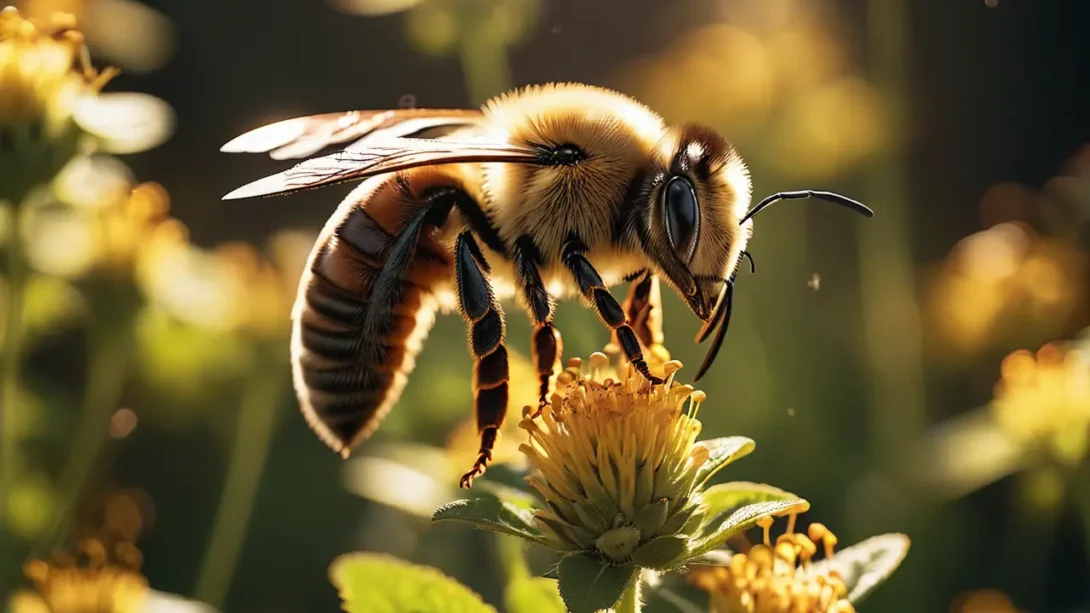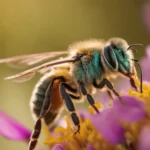Bees, with their intricate social structures and vital role in pollination, are among the most fascinating creatures in the natural world. Understanding their behavior is essential for both conservation efforts and human well-being. One aspect of bee behavior that has intrigued researchers and bee enthusiasts alike is their relationship with light. In this article, we delve into the complex interplay between bees and light, investigating whether bees are naturally attracted to light sources and the implications of this behavior.
Bee Behavior
Before delving into the specifics of bee attraction to light, it’s essential to gain a basic understanding of bee behavior. Bees, particularly honeybees and bumblebees, exhibit complex behaviors shaped by their evolutionary history and ecological niche. Central to their behavior is their keen sense of vision, which plays a crucial role in navigation, foraging, and communication within the hive. Bees are sensitive to various wavelengths of light, allowing them to perceive their surroundings with remarkable precision.
The Relationship Between Bees and Light
The question of whether bees are attracted to light has long fascinated researchers and beekeepers. While some insects, such as moths and certain beetles, are known for their positive phototaxis, or attraction to light, the relationship between bees and light is more nuanced. Bees are diurnal creatures, meaning they are active during the day and rely on sunlight for navigation and foraging. However, their response to artificial light sources, such as streetlights and indoor lighting, is less straightforward.
Historically, researchers believed that bees were not attracted to artificial light sources and tended to avoid them. Instead, bees were thought to rely primarily on natural light cues for navigation and foraging. However, recent studies have challenged this assumption, suggesting that bees may indeed be attracted to certain types of artificial light, particularly those emitting specific wavelengths within the visible spectrum.
Factors Influencing Bee Attraction to Light
Understanding the factors that influence bee attraction to light is essential for unraveling the complexities of this behavior:
- Natural Instincts and Behaviors: Bees exhibit a range of behaviors influenced by their evolutionary history and ecological niche. While bees are diurnal creatures that rely on sunlight for navigation and foraging, their response to artificial light sources may vary depending on factors such as species, time of day, and environmental conditions.
- Seasonal and Environmental Factors: Bee attraction to light may be influenced by seasonal and environmental factors, such as temperature, humidity, and the availability of natural forage. During periods of low light, such as cloudy days or late evenings, bees may be more sensitive to artificial light sources and exhibit different behavioral responses.
- Influence of Artificial Light Sources: The type and intensity of artificial light sources can significantly impact bee attraction. While bees are generally less attracted to dim or yellow-colored lights, they may be more attracted to bright, blue-white lights commonly emitted by certain types of streetlights and indoor lighting fixtures. Light pollution from urban areas and human activities can disrupt natural light cues and affect bee behavior, potentially leading to disorientation, disruption of foraging patterns, and navigational errors.
As researchers continue to investigate the factors influencing bee attraction to light, it is becoming increasingly clear that this behavior is more complex than previously thought. By considering the interplay of natural instincts, environmental factors, and the characteristics of artificial light sources, we can gain a deeper understanding of how bees respond to their changing surroundings.
Practical Implications and Considerations
The implications of bee attraction to light extend beyond scientific curiosity and have practical implications for both bee conservation and human well-being:
- Bee-Friendly Lighting Practices: Adopting bee-friendly lighting practices can help mitigate the negative effects of artificial light on bee behavior and ecology. This includes using warm-colored, low-intensity lights for outdoor lighting, especially in areas frequented by bees. Shielding lights to minimize glare and directing light downward can further reduce the impact of light pollution on nocturnal insects, including moths and beetles.
- Mitigating Light Pollution: Light pollution from urban areas and human activities poses a significant threat to nocturnal insects, disrupts natural ecosystems, and affects human health and well-being. Implementing measures to reduce light pollution, such as using energy-efficient lighting fixtures, minimizing outdoor lighting during non-essential hours, and promoting dark-sky-friendly practices, can help protect bees and other nocturnal wildlife.
- Balancing Human Needs with Bee Conservation Efforts: Finding a balance between human needs for lighting and the conservation of bees and other pollinators is essential for sustainable development. By raising awareness about the impact of artificial light on bee behavior and ecology, advocating for responsible lighting practices, and supporting habitat conservation efforts, we can create a more bee-friendly environment that benefits both bees and humans alike.
Myths and Misconceptions About Bees and Light
Despite ongoing research and scientific advancements, there are several myths and misconceptions surrounding bees and their relationship with light. Addressing these misconceptions is essential for promoting accurate understanding and informed decision-making:
- Assumption of Positive Phototaxis: While some insects, such as moths and certain beetles, exhibit positive phototaxis, or attraction to light, bees do not necessarily share this behavior. Contrary to popular belief, bees are primarily diurnal creatures and rely on sunlight for navigation and foraging. Their response to artificial light sources is more nuanced and may vary depending on various factors, as discussed earlier.
- Generalization of Bee Behavior: It is important to recognize that bee behavior is diverse and species-specific. Different species of bees may exhibit different responses to light stimuli based on their ecological niche, foraging habits, and evolutionary history. Assuming a one-size-fits-all approach to bee behavior can lead to misunderstandings and misinterpretations.
- Overestimation of Light Attraction: While certain types of artificial light may attract bees, the extent to which bees are drawn to light sources can be exaggerated. Bees are highly adaptive creatures capable of navigating complex environments using multiple sensory cues, including visual, olfactory, and tactile signals. Their response to light is just one aspect of their complex behavior repertoire.
By dispelling these myths and misconceptions, we can foster a more accurate and nuanced understanding of bee behavior and promote informed decision-making in bee conservation and management efforts.
Case Studies and Research Findings
Numerous studies have been conducted to investigate the relationship between bees and light, yielding valuable insights into their behavior and ecology. From laboratory experiments to field observations, researchers have explored the impact of artificial light on bee navigation, foraging patterns, and reproductive success. These studies have highlighted the importance of considering the specific characteristics of light sources, as well as the broader ecological context, when assessing their effects on bee populations.
For example, a study published in the journal Ecology and Evolution found that certain species of bees exhibited altered foraging behavior in response to artificial light, with some bees showing increased activity near streetlights and other brightly lit areas. Another study conducted by researchers at the University of Bristol revealed that exposure to artificial light at night can disrupt the natural circadian rhythms of bees, affecting their sleep patterns and overall health.
These and other research findings underscore the need for further investigation into the complex interactions between bees and light and the development of strategies to minimize the negative effects of light pollution on bee populations.
Conclusion
In conclusion, the relationship between bees and light is a multifaceted topic that requires careful consideration of various factors, including bee behavior, environmental conditions, and the characteristics of light sources. While bees are primarily diurnal creatures that rely on sunlight for navigation and foraging, their response to artificial light can be influenced by a range of factors.
By dispelling myths and misconceptions, conducting rigorous scientific research, and implementing bee-friendly lighting practices, we can help protect these vital pollinators and preserve their essential role in ecosystems worldwide. As we strive to create a more sustainable future for bees and humans alike, it is imperative that we continue to deepen our understanding of the complex interactions between bees and their environment and work together to ensure the long-term health and well-being of bee populations.



